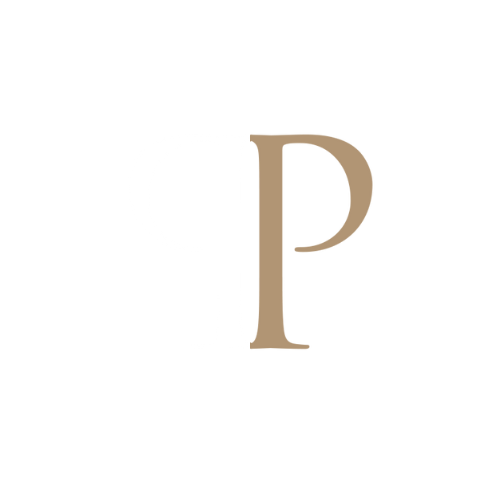Morning Note: Market news and an update from Proctor & Gamble.
Market News
US equities notched up a sixth straight weekly increase, boosted by corporate earnings and signs of economic resilience. The results season gets into full flow this week with updates from IHG, Heineken, Reckitt, Unilever, Relx, Microsoft, Alphabet, Meta Platforms, Newmont, Mastercard, and Colgate-Palmolive.
Gold continued to push upwards and currently trades at a record high of $2,730 an ounce as Middle-East tensions stoked demand and investors positioned for the US presidential election. Brent Crude ($73.20 a barrel) rebounded somewhat from last week’s losses.
In Asia this morning, equity markets were mixed: Nikkei 225 (-0.1%); Hang Seng (-1.5%); Shanghai Composite (+0.2%). China cut its key lending rates to support growth, adding to optimism over recent stimulus measures. The one-year loan prime rate was lowered to 3.1% from 3.35%, while the five-year LPR was reduced to 3.6% from 3.85%. Both moves were bigger than expected.
The FTSE 100 is currently trading 0.3% higher at 8,378. UK house prices rose 1.0% year on year in October, with buyer “jitters” ahead of the chancellor’s first budget muting a typical autumn bounce, according to Rightmove. Sterling is steady at $1.3030 and €1.2050
Finance ministers and central bank chiefs gather in Washington this week for the annual meeting of the IMF and World Bank. The IMF’s Fiscal Monitor on Wednesday will feature a warning that public debt levels are set to reach $100tn this year, driven by China and the US.
In France, Michel Barnier said tens of billions of euros of tax increases proposed by left-wing opposition parties would be “unbearable,” undermining the purchasing power of businesses and households.
Source: Bloomberg
Company News
On Friday lunchtime, Proctor & Gamble released results for the three months to 30 September, the first quarter of its financial year to 30 June 2025. Revenue was a touch below the market expectations, driven by weaker demand in the major markets of the US and China. However, guidance for the full year has been maintained and, in response, the shares were little changed.
P&G is a global consumer goods company with annual sales of $84bn across a broad range of iconic brands including Gillette, Crest, Ariel, Head & Shoulders, and Pampers. The focus is on daily use categories. The group generates around half of its sales in North America, a fifth in Europe, and the remainder in emerging markets.
The company is undertaking a limited market portfolio restructuring of its business operations, primarily in Argentina and Nigeria, to address challenging macroeconomic and fiscal conditions. During the latest quarter, operations in Argentina were substantially liquidated and the company recorded a $0.8bn post-tax restructuring charge.
In the three months to 30 September, net sales fell by 1% to $21.7bn, slightly below the market forecast of $21.9bn, against a challenging economic and geopolitical backdrop.
Organic growth, which excludes the impact of acquisitions, disposals, and negative currency movements, was up 2% in the quarter, against a tough year-on-year comparative. Higher pricing and volume both contributed one point of growth, while mix had a neutral impact. The business was hit by weaker demand in major markets — the US and China – as consumers switched to cheaper household and personal care brands.
However, growth was broad-based, with 8 of 10 product categories growing organic sales. Global aggregate value share was up on the prior year, with 28 of the group’s top 50 category/country combinations holding or growing share in the quarter.
The group operates across five divisions:
· Fabric & Home Care (35% of full-year sales) grew by 3% in organic terms, driven by home products.
· Baby, Feminine & Family Care (24% of sales) was flat, held back by a volume decline in baby care products.
· Beauty (18% of sales) fell by 2%, driven by a 20%+ decline in skin care due to volume decline and unfavourable mix from lower sales of the super-premium SK-II brand. Volume decline in China also had an impact.
· Health Care (14% of sales) grew by 4%, driven by respiratory products and increased pricing.
· Grooming (8% of sales) grew by 3% as a result of innovation-driven volume growth.
On a currency-neutral basis, the core gross margin grew by 10 basis points in the quarter to 52.1%, driven by gross productivity savings and higher pricing, offset partly by unfavourable commodity costs, unfavourable product mix, and product reinvestments. The operating margin slipped by 10bps to 26.3%. Core EPS grew by 4% at constant currency in the quarter to $1.93, just above the market forecast of $1.90.
Adjusted free cash flow was $3.9bn and adjusted free cash flow productivity was 82%, below the 90% target. The group ended the quarter with net debt of $24.0bn and returned over $4.4bn of cash to shareholders through dividends ($2.4bn) and share repurchases ($1.9bn). The group has increased its dividend for 68 years in a row.
For the financial year to June 2025, the group still expects to deliver organic sales growth (3%-5%), core EPS growth (5%-7%), and free cash flow productivity (90%) – each in-line with its long-term growth algorithm. The company also expects to pay around $10bn in dividends and to repurchase $6bn-$7bn of shares in the year.
Source: Bloomberg


